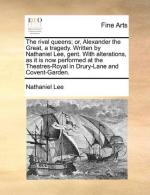|
This section contains 6,014 words (approx. 21 pages at 300 words per page) |

|
SOURCE: Brown, Laura. “Affective Tragedy.” In English Dramatic Form, 1660-1760: An Essay in Generic History, pp. 69-101. New Haven, Connecticut: Yale University Press, 1981.
In this excerpt, Brown argues that The Rival Queens represents one of the era's earliest experiments in moving away from heroic action to affective tragedy, a form Lee mastered in Lucius Junius Brutus.
Restoration affective tragedy substitutes the unfortunate and undeserved situation of its central character for the aristocratic status of the heroic protagonist. The unique and defining characteristic of this form is its dependence upon the audience's pitying response. The characters and episodes of an affective tragedy are comprehensible not in terms of an internal standard of judgment that directs our assessments and expectations, but rather in terms of the expressed pathos of the situation. In the fictional world posited by such a form, merit is either ignored or assumed, and action and meaning...
|
This section contains 6,014 words (approx. 21 pages at 300 words per page) |

|


